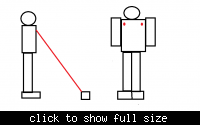stephkre
Newbie level 6
Hello,
I have a laser distance detector that I would like to reverse engineer. I would like to change out the laser device which is a class 2 to a class 1 so it will be not harmful to the eyes. Therefore I will need to reverse engineer the circuitry to understand more about the device and also to remove other functions that the device includes that I will not need. For instance I dont need a display I just need to be able to display different distances using some leds. Can someone help me in doing this work or help by pointing me where I can get some knowledge on doing this work? I will have more information when I get the device. What would you need to know to start the process. I figured most the device I would not use such as most the buttons or the display. Thanks in advance.
I have a laser distance detector that I would like to reverse engineer. I would like to change out the laser device which is a class 2 to a class 1 so it will be not harmful to the eyes. Therefore I will need to reverse engineer the circuitry to understand more about the device and also to remove other functions that the device includes that I will not need. For instance I dont need a display I just need to be able to display different distances using some leds. Can someone help me in doing this work or help by pointing me where I can get some knowledge on doing this work? I will have more information when I get the device. What would you need to know to start the process. I figured most the device I would not use such as most the buttons or the display. Thanks in advance.
